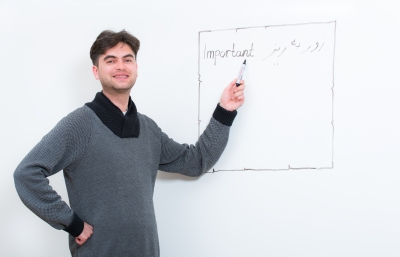If you are preparing to become a teacher with the anticipation of leading a group of 20 or more students into the process of academic discovery, it is easy to let most of your concentration be focused on academics and on focusing that class on the school work at hand. You envision yourself in front of a big group of fascinated youngsters who are all about paying attention to what you have to say.

There is a fallacy in this image though and it lies in what will be actually going in the minds of those students you will try to teach each day. The fundamental flaw in this assumption is that when you are looking out at a group of a couple dozen kids that their minds are only on you because the class is all about you and the topic at hand in your lesson plan. The truth is that the class is all about each other and the social side of any classroom setting can come to totally dominate the classroom time for the kids.
If you do not recognize or don’t know how to diagnose what is going on socially in your classroom, you are working at a distinct disadvantage. Kids are learning a lot at school and not all of it is what you have prepared for them to learn. The social setting in that classroom is teaching them all kinds of lessons that you have no control over. Moreover, some of those lessons may not be wholesome or socially acceptable concepts.
The society of children and teenagers can be amazingly brutal. Kids are far more harsh on each other than adults would ever imagine and the harm that can be done to the heart and soul of someone who gets singled out to be victimized can be lifelong and devastating. So it is to your advantage if you learn to recognize the signs of unhealthy social interaction and jump in and change that group behavior before it goes too far. This will take some keen powers of observation on your part, an ability to spot social exchanges happening even as you teach and the psychology to know what is going on.
The good news is that as the leadership in the class room, you can effect change in how the kids influence each other socially. Because you know that social skills are being learned all the time around you as you teach, you also have the opportunity to create activities and opportunities for discussion that can change that social behavior for the better. You can literally teach those kids to get along and to treat each other in a civil fashion and do so without alarming the kids or losing any teaching time that you need to complete your academic goals.
One great way to begin to move the kids toward positive social models is to move from the traditional “teacher talks to big class” approach to teaching to one that uses small group activity, teamwork and competition to not only make learning a lot more fun but to encourage good social development that will help the kids develop socially as well as academically.
You should not feel that by trying to teach the kids good social skills you are abandoning your core principals as an educator. If you can also teach the kids good social skills while you have them in your class, that time could turn out to be the most valuable thing you have to offer your students. And when you see those positive social values begin to change lives in your young students, you will get a unique form of pride because it was you that made it happen.





